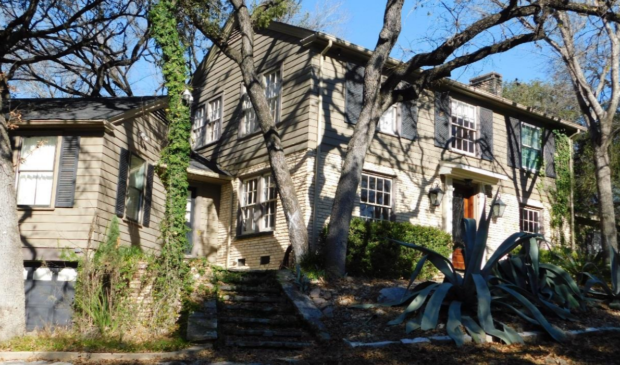West Austin home causes impasse at HLC
Friday, April 26, 2019 by
Jessi Devenyns City code requires a structure to meet two out of five requirements in order to be designated historic. One of the most often-used requirements is that of historical association with an individual who “contributed significantly to the history of the city, state or nation.” The tricky part is that the individual must have been noteworthy at least 50 years ago.
The property at 1400 Winsted Lane came before the Historic Landmark Commission at its April 22 meeting after the commission initiated historic zoning on the property in February. The home, which was built in 1940, sits on 1 acre and the current property owners have requested a demolition permit in order to subdivide the property into four separate lots.
The commissioners, who were unable to agree after several votes on whether the house was significant enough to be zoned historic, postponed the case for another month.
Although staff and the commissioners supported the idea of zoning the home historic, there were some reservations about the timeline for historical significance. “It would be wonderful if this house was preserved,” said Historic Preservation Officer Steve Sadowsky. “But staff has some very real reservations” since the home’s historical significance spans only two years.
The commissioners too were uncertain whether the home’s link to Ernest Smith, a former dean of the University of Texas School of Law, was a strong enough historical association since Smith only moved into the house in 1967. The current cutoff date for historical associations is 1969. Prior to that, the home was owned by an insurance executive.
Both staff and commissioners agreed that the home was architecturally significant. However, Haley Wilcox, an architectural historian with Ogee, a historic preservation consulting firm, found that the integrity of the home’s architecture was “tenuous.” She displayed a 1979 permit that highlighted “substantial” changes to the home including a large rear addition and window replacements. According to her, during past remodels of the property, priority was placed on modernization and increased square footage rather than preservation. “The property retains very little of its historical elements,” she said.
Members of the West Austin Neighborhood Group indicated that the Texas Department of Transportation has identified the property as eligible for listing on the National Register of Historic Places.
Holly Reed, the president of WANG, informed the commission that the Winsted property is “one of the oldest existing resources in Westfield” and contributes to the cohesiveness and character of the West Austin garden suburb neighborhood. She came with half a dozen other community members who expressed similar sentiments about the essential nature of the home and the character of the neighborhood.
Several of the commissioners were hesitant about recommending historic zoning based on the home’s historical associations. In an effort to compromise, Commissioner Ben Heimsath proposed looking at the structure in terms of its contribution to community value, one of the five requirements allowed for consideration under historic zoning.
However, even weighing the home’s significance from another angle, the commission was unable to recommend historic zoning. A vote to recommend demolition failed 4-3 with Commissioner Blake Tollett recusing himself. Later, a vote to recommend historic zoning was rescinded in favor of pursuing a postponement, but the commission could not agree to postpone the case with a vote to do so failing 5-2.
Unable to untangle the deadlock, the commission tabled the matter for a majority of the meeting before picking it back up.
When the subject of postponement was readdressed, Commissioner Witt Featherston altered his opinion and cast his vote for a postponement until next month and allowing the motion to pass 6-1.
Prior to next month’s meeting, the commissioners requested staff to provide context on Austin’s 20th-century garden suburbs to help them determine whether or not this property contributes to the community by enhancing the overall feel of this West Austin subdivision.
The Austin Monitor’s work is made possible by donations from the community. Though our reporting covers donors from time to time, we are careful to keep business and editorial efforts separate while maintaining transparency. A complete list of donors is available here, and our code of ethics is explained here.
You're a community leader
And we’re honored you look to us for serious, in-depth news. You know a strong community needs local and dedicated watchdog reporting. We’re here for you and that won’t change. Now will you take the powerful next step and support our nonprofit news organization?



